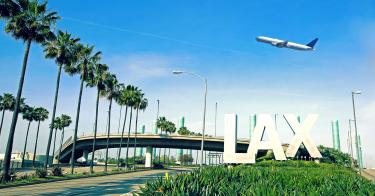Jokes about airports practically date back to the days of the Wright brothers. But the problems with our nation’s centers of air travel seem to have become particularly acute lately and, in light of the recent United Airlines passenger-dragging debacle, are no laughing matter.
Sure, President Donald Trump is overstating the matter when he calls U.S. airports “obsolete” and even “third-world.” (American airports move far more people than those of any other country and do so safely.) But something needs to be done.
After all, not a single U.S. airport is ranked within the world’s top 25, and congestion and delays are a significant problem for the nation’s most vital hubs. That’s unacceptable.
The question is how to fix it. The answer, in the minds of many lawmakers, is funneling more taxpayer money to airports, perhaps including billions in taxpayer grants that could be included in the Trump administration’s forthcoming infrastructure plan.
But there’s a much better way to invest in airports – one that does not require new federal spending.
A superior alternative would be to decrease the cumbersome federal management of airports and unleash them to operate as independent businesses.
Currently, the Federal Aviation Administration has a heavy hand in funding and regulating airports. Federal airport funding diverts billions of fliers’ tax dollars away from the airports they use most to those most fliers will never see.
Revenue restrictions
Worse, federal grants come with regulations that put a stranglehold on airports through provisions that severely restrict how they can raise and spend their own revenues. These restrictions on revenues force airports to rely on federally approved sources of cash and crush airline competition, innovation and self-sufficiency.
Instead of continuing to funnel money into this broken system, the better – and cheaper – solution is to get the federal government off airports’ backs.
One bipartisan proposal that would begin this process is the Investing in America: Rebuilding America’s Airport Infrastructure Act, sponsored by Reps. Thomas Massie, R-Ky., and Peter DeFazio, D-Ore. The bill would empower airports to raise their own funds for airport improvements by lifting the cap on passenger facility charges, a local airport user fee that is currently price-controlled by Congress.
Since Congress last set the maximum facility charge at $4.50 per passenger in 2000, passenger facility charges have lost much of their purchasing power. Lifting that cap would adequately allow airports to charge their own customers for funding in place of relying on cumbersome federal grants.
In fact, the bill would reduce federal spending by $400 million, a necessary step to ensure the local charge would replace current federal funding for larger airports instead of simply adding on to it.
Although greater changes are still needed – including addressing federal aviation taxes – the DeFazio-Massie bill is a promising start to localizing airport funding and leading airports to self-sufficiency.
Even more encouraging, the bill acknowledges that the nation’s airport infrastructure is too important to rely exclusively on centralized planning. Airports and fliers, not bureaucrats in Washington, should be in control of funding our nation’s vital aviation infrastructure.
This piece originally appeared in the Youngstown Vindicator



